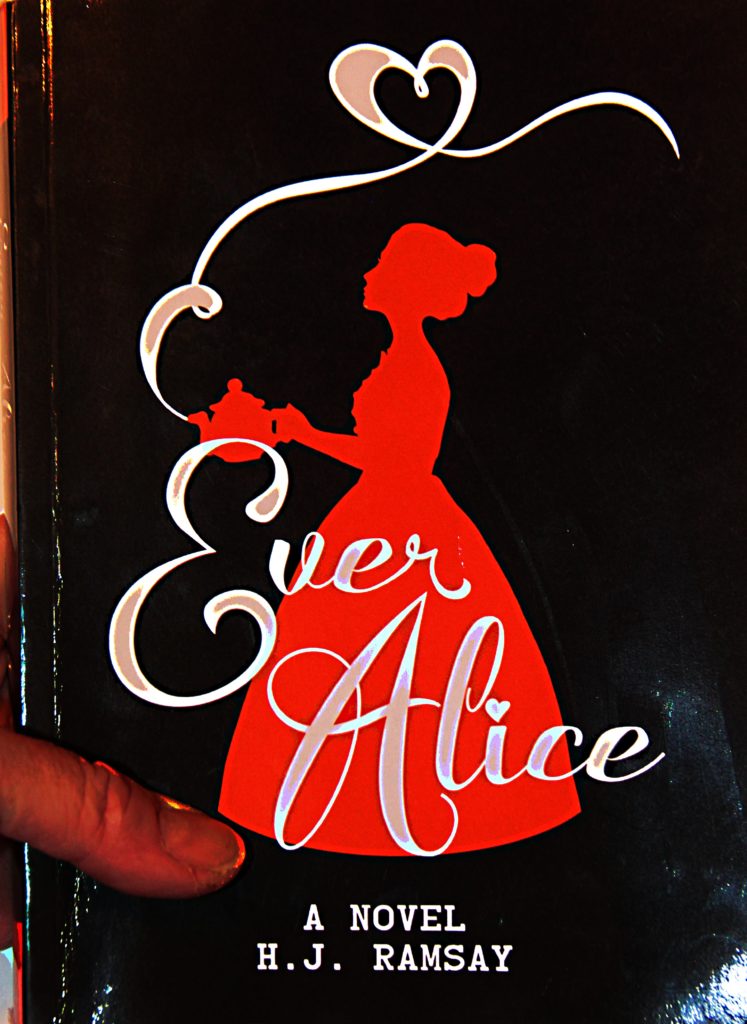
On the level of the human condition, PRAISE for Ever Alice!
On a literary level, PRAISE for Ever Alice
On an educator’s level PRAISE for Ever Alice
Families addressing mental health issues from a status quo perspective. Mental health professionals addressing mental health issues from an exploratory perspective. Teenagers addressing their mental health by speaking out but their words falling upon deaf ears. Ever Alice has it all.
Taking place in 1888, teenaged Alice is committed to an insane asylum by her parents because she is telling stories about talking animals and a cosmic Wonderland ruled by the wicked Queen of Hearts. Harmless stories, really. And since Lewis Carroll’s Alice in Wonderland was published in 1865, it’s completely likely that Ever Alice’s parents introduced her to the very fantasies they were now attempting to rid her of. In Ever Alice you will see all the beloved characters from Alice In Wonderland. H.J. Ramsay’s connection to mental illness is well done and modern stroke of genius, really. Middle schoolers, in the USA anyway, read Alice in Wonderland as part of the canon. A modernized version or addition might well open up healthy dialogue while capturing the creativity of today’s students. Making literature relevant instead of just historical really is key to education after all.
I must say, the times that I got up in arms as to the actions of Alice’s family and doctors kept me returning to the chapter title to remind myself that the story takes place in 1888. Calming my nerves that we don’t treat children exhibiting mental health issues in this way still. Today’s argument is that we are not doing enough. Ever Alice reminded me how far we’ve come. Offering some solace. This novel could be used as a catalyst to open up dialogue among youth that read it.
On a literary level, Ever Alice moves quickly. In part one the story moves back and forth successfully parallelling Alice’s decent into being lost in her mind and separated from her physical reality. Chapters are short, two to three pages, before jumping back to or from Alice’s mind in Wonderland to her physical reality in England or Switzerland. Part two has Alice completely lost in Wonderland. In part three as madness and mayhem prevail in Wonderland. The queen’s realm is in upheaval, Alice fights-albiet conflictedly- for justice to prevail, though she is constantly nearly upended and her plans foiled time and again as she then returns to her physical reality in Switzerland.
As a teacher, I am always guiding students to use similes to enhance their writing. Ever Alice is chock full of them-without being overdone-because it adds to the whimsy of the theme. The similes in this book are unique. A couple of my favorites: “her thoughts kept scattering like unruly school children” and “A chill blanketed her shoulders as grey clouds filled the sky. They looked like they could crack open like eggs and drench her within seconds.” There are many more scattered throughout the book which I’ll leave you to discover on your own.
Ever Alice would be a fantastic modern addition to introduce students to Lewis Carroll’s iconic novel. I see so much potential not only for creative writing, compare and contrast but also, as stated earlier, an open discussion on mental health issues. An online lexile framework website ranked Ever Alice at a 700-800 level. The same website ranks Lewis Carroll’s Alice in Wonderland at 580. This upholds my thought that middle schoolers to high schoolers could benefit and become engaged in such dialogues and lesson plans. And if you’re going to go that route, may I suggest you hook them with Jefferson Airplane’s 1966 “White Rabbit” as an anticipatory set!
